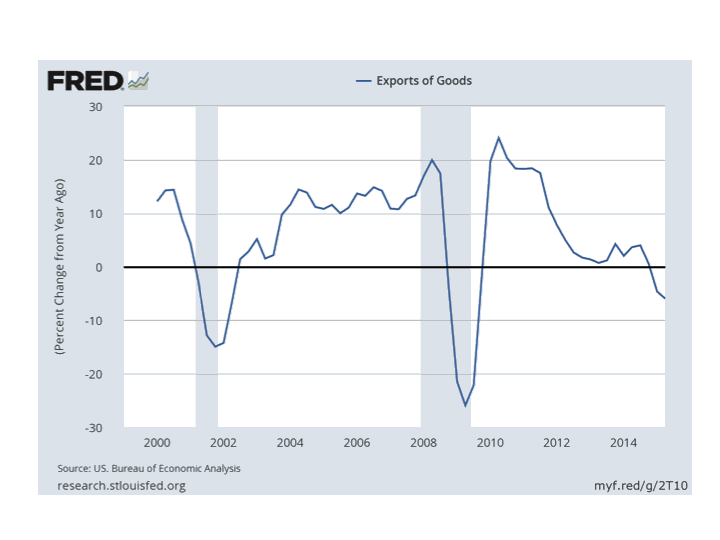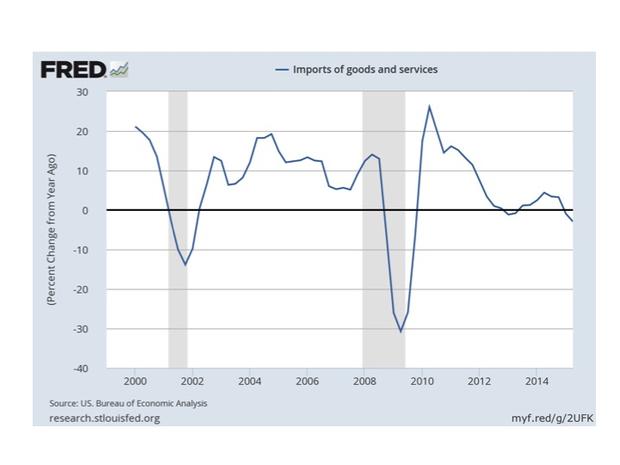The unsolved mystery of falling global trade
South Korean exports fell 18.5 percent in January, the latest sign of a global trade slowdown in the post-recession period. Developing countries have traditionally relied on export-led growth during their development phase, and if the slowdown persists it will be much harder for them to do that and raise their standard of living.
This is a also risk for developed countries. Slower growth in developing countries means they'll purchase fewer goods and services from developed countries, hurting their growth as well.
The following two charts show export and import growth for the U.S. and illustrate what has happened here and in many other countries in recent years. Trade collapsed during the Great Recession, appeared to bounce back once that slump ended but has been falling ever since.
Why this has happened is unclear. It could be related to the recession, so further recovery could help some, but most analysts believe that it's connected to deeper, structural issues. One hypothesis is that falling trade results from protectionist measures put in place during the recession, but it's hard to find clear evidence for this, leading most observers to reject that hypothesis.
Another theory is that globalization is slowing down. Instead of expanding production activities globally, many firms are pulling back, and this decline in "global value chains" helps explain the trade decline.
But a close look at the data suggests the problem is more likely due to a "compositional effect." The ratio of durable goods relative to nondurables has declined, and within China the economy has shifted from investment goods to consumption, both of which can affect trade flows. For example, nondurable consumption goods tend to be traded less than durable investment goods.
Finally, falling trade levels may be related to the end of the integration processes of China and Central/Eastern Europe into the world economy. When these countries opened their doors, it created a sustained burst in trade, but as that process ends, trade is leveling off.
Presently, there's no clear consensus saying which explanation is best, and it may be that several are working together. Finding the cause will help to point to a solution, but several steps can still be taken to boost international trade.
One promising area is services, which are more tradable than many people presume, especially since the advent of digital technology. But services are among the most protected class of goods. Trade agreements that reduce those barriers could help improve trade flows.
Unfortunately, recent trade agreements such as the Trans-Pacific Partnership are unlikely to have a significant impact on total trade activity. Much more work is needed for that to happen. Recently, after the failure of the Doha Round of trade talks in Qatar, the U.S and other countries have indicated that a new approach is needed, so perhaps the future holds more promise.
In any case, this is an important issue for the world economy and for the U.S. -- and it ought to be receiving more attention.


